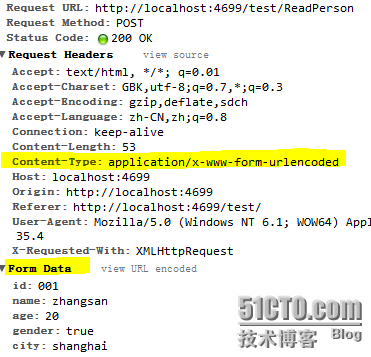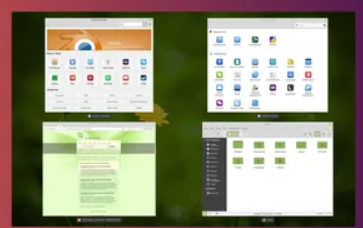1、概览 {#1概览}
在 Spring 集成测试中,我们可能想要覆盖应用的一些 Bean。通常,可以使用专门为测试定义的 Spring Bean 来实现。然而,在 Spring Context 中提供多个具有相同名称的 Bean,可能会遇到 BeanDefinitionOverrideException 异常。
本文将带你了解如何在 Spring Boot 应用中 Mock 或 Stub 集成测试的 Bean,同时避免 BeanDefinitionOverrideException。
2、在测试中使用 Mock 或 Stub {#2在测试中使用-mock-或-stub}
在深入了解细节之前,应该了解如何在测试中使用 Mock 或 Stub。这是一种强大的技术,可以确保应用不会出现错误。
也可以在 Spring 中采用这种方法。不过,只有在使用 Spring Boot 时才能直接模拟集成测试 Bean。
或者,也可以使用测试配置来 Stub 或 Mock bean。
3、Spring Boot 应用示例 {#3spring-boot-应用示例}
创建一个简单的 Spring Boot 应用,包含了一个 Controller、Service 和一个 Configuration 类。
@RestController
public class Endpoint {
private final Service service;
public Endpoint(Service service) {
this.service = service;
}
@GetMapping("/hello")
public String helloWorldEndpoint() {
return service.helloWorld();
}
}
/hello 端点返回一个由 Service 提供的字符串,我们希望在测试过程中替换该字符串:
public interface Service {
String helloWorld();
}
public class ServiceImpl implements Service {
public String helloWorld() {
return "hello world";
}
}
需要注意的是,我们将使用一个接口。因此,当需要时,我们将对实现进行 Stub 操作以获得不同的值。
还需要一个配置来加载 Service Bean:
@Configuration
public class Config {
@Bean
public Service helloWorld() {
return new ServiceImpl();
}
}
最后,添加 @SpringBootApplication:
@SpringBootApplication
public class Application {
public static void main(String[] args) {
SpringApplication.run(Application.class, args);
}
}
4、使用 @MockBean 覆盖 {#4使用-mockbean-覆盖}
MockBean 自 Spring Boot 1.4.0 版起就可用了。
不需要任何测试配置,只需在测试类中添加 @SpringBootTest 注解即可:
@SpringBootTest(classes = { Application.class, Endpoint.class })
@AutoConfigureMockMvc
class MockBeanIntegrationTest {
@Autowired
private MockMvc mockMvc;
@MockBean
private Service service;
@Test
void givenServiceMockBean_whenGetHelloEndpoint_thenMockOk() throws Exception {
when(service.helloWorld()).thenReturn("hello mock bean");
this.mockMvc.perform(get("/hello"))
.andExpect(status().isOk())
.andExpect(content().string(containsString("hello mock bean")));
}
}
这与 Main Configuration 没有冲突。这是因为 @MockBean 将向我们的应用注入一个 Service Mock 对象。
最后,使用 Mockito 伪造 Service 返回值:
when(service.helloWorld()).thenReturn("hello mock bean");
5、不使用 @MockBean 进行覆盖 {#5不使用-mockbean-进行覆盖}
最后了解一下在不使用 @MockBea 的情况下覆盖 Bean 的更多方式。
有四种不同的方法:Spring Profile、条件属性、@Primary 注解和 Bean 定义覆盖。然后,可以对 Bean 的实现进行 Stub 或 Mock。
5.1、使用 @Profile {#51使用-profile}
定义 Profile 是 Spring 众所周知的做法。首先,使用 @Profile 创建一个配置:
@Configuration
@Profile("prod")
public class ProfileConfig {
@Bean
public Service helloWorld() {
return new ServiceImpl();
}
}
然后,就可以用 Service Bean 定义测试配置了:
@TestConfiguration
public class ProfileTestConfig {
@Bean
@Profile("stub")
public Service helloWorld() {
return new ProfileServiceStub();
}
}
ProfileServiceStub Service 将 Stub 已定义的 ServiceImpl:
public class ProfileServiceStub implements Service {
public String helloWorld() {
return "hello profile stub";
}
}
我们可以创建一个包含 main 配置和测试配置的测试类:
@SpringBootTest(classes = { Application.class, ProfileConfig.class, Endpoint.class, ProfileTestConfig.class })
@AutoConfigureMockMvc
@ActiveProfiles("stub")
class ProfileIntegrationTest {
@Autowired
private MockMvc mockMvc;
@Test
void givenConfigurationWithProfile_whenTestProfileIsActive_thenStubOk() throws Exception {
this.mockMvc.perform(get("/hello"))
.andExpect(status().isOk())
.andExpect(content().string(containsString("hello profile stub")));
}
}
我们在 ProfileIntegrationTest 中激活了 stub profile。因此,测试配置将加载 Service stub,而不会加载 prod profile。
5.2、使用 @ConditionalOnProperty {#52使用-conditionalonproperty}
与 Profile 类似,可以使用 @ConditionalOnProperty 注解在不同的 Bean 配置之间切换。
在 Main Configuration 中设置 service.stub 属性:
@Configuration
public class ConditionalConfig {
@Bean
@ConditionalOnProperty(name = "service.stub", havingValue = "false")
public Service helloWorld() {
return new ServiceImpl();
}
}
在运行时,需要将此条件设置为 false,通常是在 application.properties 文件中:
service.stub=false
相反,在测试配置中,我们希望触发 Service 加载。因此,需要此条件为 true:
@TestConfiguration
public class ConditionalTestConfig {
@Bean
@ConditionalOnProperty(name="service.stub", havingValue="true")
public Service helloWorld() {
return new ConditionalStub();
}
}
然后,再添加 Service stub:
public class ConditionalStub implements Service {
public String helloWorld() {
return "hello conditional stub";
}
}
最后,创建测试类。将 service.stub 条件设置为 true,然后加载 Service stub:
@SpringBootTest(classes = { Application.class, ConditionalConfig.class, Endpoint.class, ConditionalTestConfig.class }
, properties = "service.stub=true")
@AutoConfigureMockMvc
class ConditionIntegrationTest {
@AutowiredService
private MockMvc mockMvc;
@Test
void givenConditionalConfig_whenServiceStubIsTrue_thenStubOk() throws Exception {
this.mockMvc.perform(get("/hello"))
.andExpect(status().isOk())
.andExpect(content().string(containsString("hello conditional stub")));
}
}
5.3、使用 @Primary {#53使用-primary}
还可以使用 @Primary 注解。在 Main Configuration 中,在测试配置中定义一个 Primary Service,以更高的优先级加载:
@TestConfiguration
public class PrimaryTestConfig {
@Primary
@Bean("service.stub")
public Service helloWorld() {
return new PrimaryServiceStub();
}
}
注意,Bean 的名称必须不同。否则,仍然会遇到原来的 BeanDefinitionOverrideException 异常。我们可以更改 @Bean 的 name 属性或方法的名称。
同样,需要 Service stub:
public class PrimaryServiceStub implements Service {
public String helloWorld() {
return "hello primary stub";
}
}
最后,通过定义所有相关组件来创建测试类:
@SpringBootTest(classes = { Application.class, NoProfileConfig.class, Endpoint.class, PrimaryTestConfig.class })
@AutoConfigureMockMvc
class PrimaryIntegrationTest {
@Autowired
private MockMvc mockMvc;
@Test
void givenTestConfiguration_whenPrimaryBeanIsDefined_thenStubOk() throws Exception {
this.mockMvc.perform(get("/hello"))
.andExpect(status().isOk())
.andExpect(content().string(containsString("hello primary stub")));
}
}
5.4、使用 spring.main.allow-bean-definition-overriding 属性 {#54使用-springmainallow-bean-definition-overriding-属性}
如果之前的办法都不灵,咋办?Spring 提供了 spring.main.allow-bean-definition-overriding 属性,可以直接覆盖 main configuration。
定义测试配置:
@TestConfiguration
public class OverrideBeanDefinitionTestConfig {
@Bean
public Service helloWorld() {
return new OverrideBeanDefinitionServiceStub();
}
}
然后,需要 Service stub:
public class OverrideBeanDefinitionServiceStub implements Service {
public String helloWorld() {
return "hello no profile stub";
}
}
再次创建一个测试类。如果要覆盖 Service Bean,需要将属性设置为 true:
@SpringBootTest(classes = { Application.class, Config.class, Endpoint.class, OverribeBeanDefinitionTestConfig.class },
properties = "spring.main.allow-bean-definition-overriding=true")
@AutoConfigureMockMvc
class OverrideBeanDefinitionIntegrationTest {
@Autowired
private MockMvc mockMvc;
@Test
void givenNoProfile_whenAllowBeanDefinitionOverriding_thenStubOk() throws Exception {
this.mockMvc.perform(get("/hello"))
.andExpect(status().isOk())
.andExpect(content().string(containsString("hello no profile stub")));
}
}
5.5、使用 Mock 代替 Stub {#55使用-mock-代替-stub}
到目前为止,在使用测试配置时,我们已经看到了使用 Stub 的例子。然而,我们也可以对一个 Bean 进行 Mock。这对于之前看到的任何测试配置都适用。这里以 Profile 为例,进行演示:
这一次,不再使用 Stub,而是使用 Mockito mock 方法返回一个 Service:
@TestConfiguration
public class ProfileTestConfig {
@Bean
@Profile("mock")
public Service helloWorldMock() {
return mock(Service.class);
}
}
同样,创建一个测试类,激活 mock Profile:
@SpringBootTest(classes = { Application.class, ProfileConfig.class, Endpoint.class, ProfileTestConfig.class })
@AutoConfigureMockMvc
@ActiveProfiles("mock")
class ProfileIntegrationMockTest {
@Autowired
private MockMvc mockMvc;
@Autowired
private Service service;
@Test
void givenConfigurationWithProfile_whenTestProfileIsActive_thenMockOk() throws Exception {
when(service.helloWorld()).thenReturn("hello profile mock");
this.mockMvc.perform(get("/hello"))
.andExpect(status().isOk())
.andExpect(content().string(containsString("hello profile mock")));
}
}
其工作原理与 @MockBean 类似。不过,使用 @Autowired 注解将 Bean 注入测试类。与 Stub 相比,这种方法更加灵活,可以在测试用例中直接使用 when/then 语法。
6、总结 {#6总结}
本文介绍了在 Spring 集成测试中覆盖 Bean 的几种方式,包括使用 @MockBean、@Profile、@ConditionalOnProperty、@Primary 注解以及 allow-bean-definition-overriding 属性。
Ref:https://www.baeldung.com/spring-beans-integration-test-override
 51工具盒子
51工具盒子




